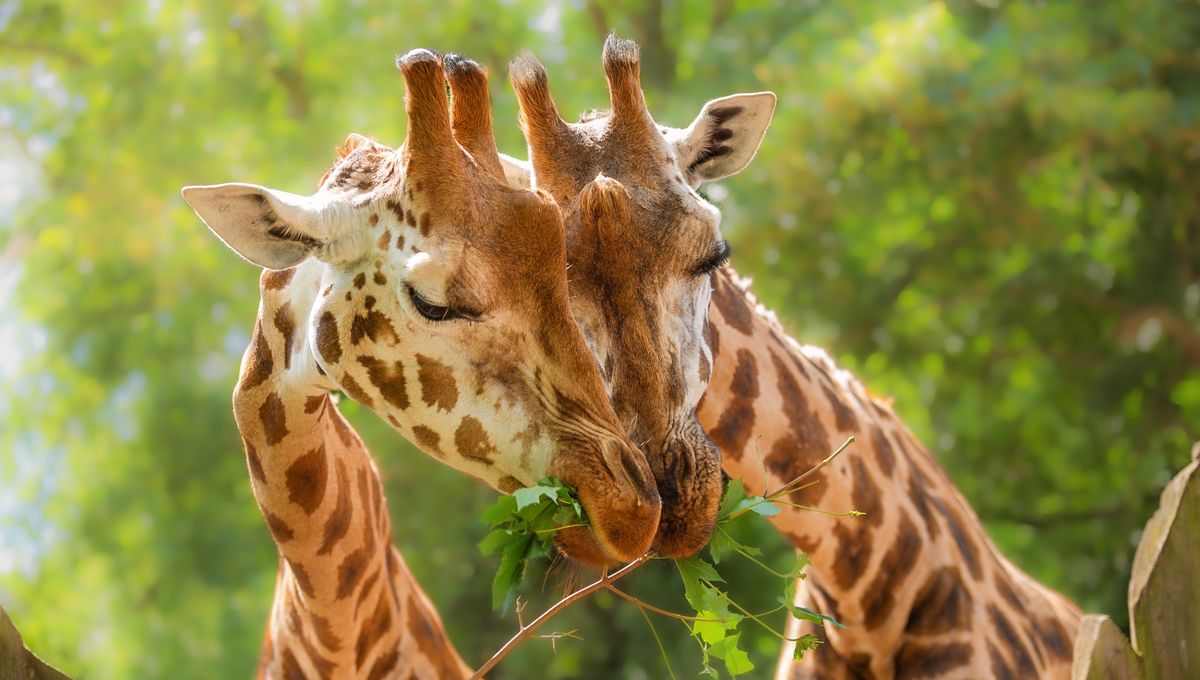
Our lofty friends, the giraffes, are slowly and quietly disappearing from the wild. Some organizations are trying to help these majestic beasts by investing in animal in vitro fertilization (IVF). Now, the first artificial fertilized, matured, and preserved giraffe embryo has been created in a historic and groundbreaking milestone.
When you think of endangered mammals in Africa, your thoughts may instantly be transported to rhinoceroses and elephants. However, giraffes are also at risk, with wild elephant populations outnumbering giraffes by a staggering 350 percent – a stark reminder of the limited global awareness surrounding the giraffe population crisis.
There are nine different recognized giraffe subspecies in the world; the scary thing is that seven of these are classed by the International Union for Conservation of Nature (IUCN) as endangered or critically endangered. There has also been a population decline of up to 97 percent in the last 30 years in four subspecies.
Stress-reducing sperm collection
This new collaborative project combines expertise from Save The Giraffes, the University of the Free State, and others, as part of their aim to try to come up with new ways to help the conservation of wild giraffes.
Recently, scientists have been able to develop new stress-reducing immobilization and reproductive protocols. This was important because the immobilization, capture, and transportation death rate of giraffes used to be high (estimated mortality rates can vary between 10 and 35 percent depending on method). The leading causes of these deaths include their sheer size, awkward anatomy, human error, common mistakes, and unforeseen risks. In the study that highlighted the new protocol, no animals died in the capture of a total of 75 giraffes.
“It’s important to share that giraffes present unique physiological and reproductive challenges due to their enormous size and special cardiovascular systems; wild giraffes require innovative techniques for safely sedating them, collecting samples, and providing care after procedures,” Dr Francois Deacon, one of the project’s experts from the University of the Free State (South Africa), explained in a statement.
“Over the last seven years our team has conducted 254 successful sedation and captures, which has prepared us for the next delicate step of the first embryo transfer in wild giraffe.”
Advancing IVF techniques for giraffe conservation
This project has been in the development stages since the late 2010s, when the first milestone of successful collection, evaluation, and freezing of wild giraffe semen was achieved. There was also the development of an artificial fertilization prototype using advanced sperm sorting/sexing technology.
The project has also made many achievements in giraffe embryo development, where scientists have been successful in analyzing and preserving early embryos, along with advancing IVF protocols by combining semen freezing, sperm sexing, and embryo creation.
In 2025, the next phase will begin – the hopeful first successful giraffe birth using the sperm collection and embryo fertilization method. The broader vision of this project is to create a global blueprint that will help create a path for giraffe conservation, as this type of project will help increase genetic diversity in captive giraffe populations, while helping wild populations have genetically diverse offspring through precise genetic management for fragile populations.
Source Link: First-Ever Fertilized And Preserved Giraffe Embryo Sparks Hope For Endangered Species